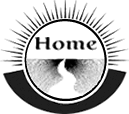 |
 |
| |
|
|
| |
|
|
| |
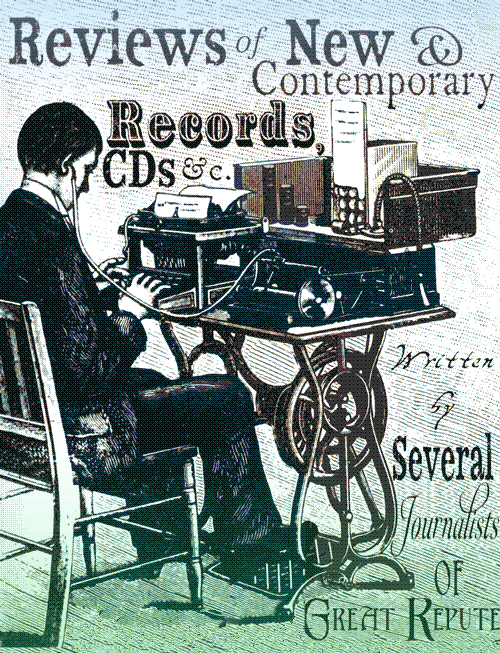 |
|
| =
October 2025 = |
|
|
| Doug
McKechnie |
Mark Fry
|
Atom Juice
|
Emma Swift
|
Giant Day
|
|
|
|
|
|
|
|
|
|
|
|
| |
| |
| |
| |
| |
| |
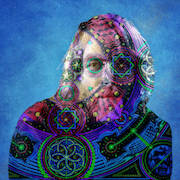 |
DOUG
McKECHNIE – SAN FRANCISCO MOOG:
1968-72 VOLs. 1 & 2
(CD,
Digital on VG+
Records)
These
releases aren’t technically new, with Vol. 1
released in 2020 and Vol. 2 in 2023, and of
course the music itself isn’t new either.
But what is recent, to this writer at
least, is the amazing story of Doug McKechnie,
as told by the amiable 83-year-old in the
wonderful Bureau of Lost Culture
podcast series.
If you’re not familiar, get thee to a
podcast source, and look up the episode “The
Sonic Explorer of the Psychedelic Frontier.”
I
thought I was fairly well-versed in my early
electronic music pioneers, but McKechnie escaped
me. The
reason he’s not as much of a household name as
Walter/Wendy Carlos, Beaver & Krause,
Suzanne Ciani, Isao Tomita or Delia Derbyshire
is that he’s not commercially minded and didn’t
properly record or release this music at the
time. These
two volumes were the first time this music saw
the light of day since they were originally
performed, mostly in live settings.
He
got his hands on only the fourth Moog Modular
Series III synthesizer built by Robert Moog.
He tells a story in the podcast of the
great inventor coming to his apartment and
catching McKechnie accidentally with a bunch of
marijuana on a table.
“I hope you’re saving some of that for
me” muttered Moog, and they got on great from
there. McKechnie
schlepped his hulking machine to live
performances, mostly around the Bay Area,
blowing the minds of hippies and others with its
otherworldly sounds.
He’d often perform in multi-media
happenings, frequently with light shows behind
him, but sometimes including dancers or at
planetarium gigs or acid tests.
Most of what you hear on these two albums
is taken from those kinds of shows.
The
music has an eerie, ghostly quality to these
ears. McKechnie’s style was often to establish a
rhythmic pattern (we might tend to think things
like looping pedals are relatively new
inventions – guess again).
Then he’d twiddle and diddle with the
sounds and try new effects and melodic themes.
Almost everything was improvised.
You can almost hear him mid-song several
times thinking “let’s see what happens when I
plug this cable into that hole!”
At
one point he was asked by the Grateful Dead to
lend his talents to one of their albums.
He tells of an eight-day period holed up
with them in the studio and how they brought
along a nitrous oxide tank with breathing hoses.
When the great interviewer Stephen Coates
asks why, McKechnie says he wondered the same
thing, then partook of the supply with them and
thought, “So that’s what this was all about,
just before I hit the floor.”
In
1969, the day before the Stones’ notorious
Altamont festival, he was asked to be part of
the sound crew.
He agreed on the condition that he be
allowed to perform a set.
Here again, I thought I knew my Altamont
history pretty well, including the lineup, but
you won’t find too many Altamont historical
accounts of the musical acts including Doug
McKechnie. But
there he was. He
decided to play at sunrise and wake up the
groggy campers, serenading them with his
intergalactic Moog sounds.
I wonder what in the world they thought
was going on, as what would unknowingly be the
start of a rather bad day.
About 7 minutes of his performance
survives in a Youtube video which is well worth
checking out (and I wish had been part of this
collection).
Why
did the performances suddenly stop in 1972?
It’s because he’d always been borrowing
that Moog from his friend and roommate, whose
rich parents had bought it for him.
Said friend sold the Moog to Tangerine
Dream. Edgar
Froese and friends would go on to use it on the
classic album Phaedra and others.
But
McKechnie’s penchant for doing imaginative and
interesting projects continued.
He provided the music for an installation
at the Exploratorium, which combined exhibits in
art and science then at San Francisco’s Palace
of Fine Arts. In
1977 he scored the short documentary
“Spaceborne,” a film which featured footage from
the Gemini, Apollo and Skylab programs and was
nominated for an Academy Award.
But
perhaps his most audacious and outrageous
achievement was when he played the Golden Gate
Bridge. I
don’t mean he performed a gig near the bridge;
he played the Golden Gate Bridge like
an instrument. A
friend had invented an electronic device that
worked like a giant electric guitar pickup.
In 1975, in the dark of night, McKechnie
and friends hooked the device up, and used a
large mallet, recording the sounds made striking
girders, cables, pylons, etc.
While it nearly got them arrested by a
passing police officer curiously surveying a
bunch of guys attaching electronic gizmos to the
Golden Gate Bridge at 2 o’clock in the morning,
they came back legally at a later date after
“renting” the bridge for the princely sum of
$13.50 an hour.
Many years later, when electronic
samplers and better sequencers were available,
as part of the 50th anniversary
celebration of the bridge, McKechnie and the San
Francisco Synthesizer Ensemble used the
recordings as part of a musical suite in
tribute. Snippets
can be heard in the podcast, but that’s about
all you can hear of it at this time.
Doug
McKechnie remains as sharp and affable as ever.
The rest of us might be late getting to
the party hearing his music and his story, but
better late than never.
It’s well worth a listen.
(Mark
Feingold)
|
|
|
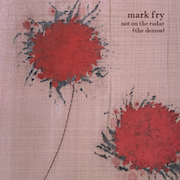
|
MARK
FRY - NOT ON THE RADAR (THE DEMOS)
Available
on Second
Language
(digital)
/ Norman
Records (limited vinyl)
Demo
versions of final release tracks have become a
cottage industry of late, particularly with
bonus discs accompanying archival reissues. Fry
does them one better by releasing his demos for
his wonderful album from May, which we
enthusiastically reviewed.
These early versions give us a glimpse into the
songwriter’s craft, a window into the creative
process as Fry works through potential melodies,
lyrics, and arrangements. Accompanying himself
on acoustic guitar (with an occasional piano or
tambourine tinkle), there is an inherent
intimate feel to these rough blueprints that
would be coloured in with drums, keyboards,
percussion, bass and additional guitars on the
final product.
The sequence matches the released album
so you can A/B to your heart’s content, but
right from the start I hear a more relaxed vocal
and easygoing fingerpicking on ‘Only Love’ and
the lilting sway of ‘Big Red Sun’ feels a bit
faster, although Angèle
David-Guillou’s piano fills and Iain Ross’s
guitar solo enhance the atmosphere on the final
product. I think ‘Stormy Sunday’ benefits from
dropping the spoken word bits (from a radio
transmission in the background?) in the
completed track, although Fry’s off-mic comment
about “hanging on to your hat” does add to the
laidback vibe. [I don’t speak French, but
perhaps those “transmissions” on the released
version were off-air recordings of an actual
Normandy weather forecast?)
‘Where The Water Meets The Land’, a
personal highlight of the album is about a
minute shorter, but I believe it was this WIP
version that convinced the filmmakers of a
recent documentary on Fry’s career to select it
as their title. I do miss David Sheppard’s
percussive “crashing waves”, but that’s an
example of how a blueprint can be enhanced once
the full band are gathered together to improvise
subtle enhancements. Conversely, the title track
is a full minute-and-a-half longer here and,
stripped of its rumbling drum backing, sound
effects, and Fry’s more forceful, almost funky
vocal is dreamier than what you’ll hear on the
final edit.
I may have missed it first time around,
but I sense a bit of a nod to Dylan’s ‘Knocking
On Heaven’s Door’ hovering over ‘Daybreak’ and
this barely-whispered early take is even more
emotional and melancholic than what eventually
made the final cut, even if that version
actually feels slower and more resolved to the
destitute resignation of “life’s heartaches.”
‘Where Would I Be’ still boasts a wonderful
lullaby melody akin to John Prine’s similar
compositions, and the Cohenesque ‘Jamais Á
L’Heure’ is still as sweet a love song you’re
likely to hear for a very long time. I’m so
entranced, I have to admit the final album
version could have omitted the spoken-word
introduction, which added an unsettling
diversion. ‘Rainbow Days’ loses its piano
accompaniment and Fry’s later spoken verses are
sung in this demo take which I prefer. There was
always the sense that the album version was an
aborted take that needed a little more work. Now
we have that to enjoy.
Overall, there’s a heartwarming
atmosphere of a personal front-room concert with
Fry playing his latest creations for you and a
small circle of friends. A conversational vocal
shines through, perhaps a more relaxed Fry
without having to think about his fellow
musicians in the room waiting for their parts to
come around? And I should also note that these
are all “clean” takes - no stumbling over missed
notes, forgotten lyrics, or “let’s start
again”s. As such, I can assure you that this is
as strong an album as the final release and
could easily have stood on its own if released
“as-is” in their stead.
Fans of Leonard Cohen, Nick Drake, Bert
Jansch, Jackie Leven, even Everything But The
Girl will immediately warm to its many charms.
And while, admittedly, there are bits of each
that you’ll probably prefer…an addition here, a
subtraction there, the songs are so beautiful,
adorned in romantic, poetic lyrics that two
versions actually are better than one! Plus,
there’s the added bonus track in the
digital-only download ‘Parallel Moon,’ a rather
upbeat head nodder and toe tapper with quite the
Dylanesque groove (and lyric!). I hope Fry has a
few more of these gems ready for the next album!
Jeff
Penczak
|
|
|
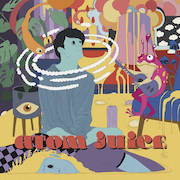
|
ATOM
JUICE – ATOM JUICE
(LP,
CD,
Digital on Heavy
Psych
Sounds Records)
Warsaw,
Poland’s Atom Juice drops in with an excellent
debut album. It’s
steeped in 70’s-style FM rock.
Their sound is laden with vocal harmonies
and lengthy tracks full of muscular guitar solos
and further instrumental explorations.
Those harmonies, by guitar/keyboard
player Bartek Dobry and guitarist Karol Melak,
are all over the record.
Barely any of the vocals are not
sung in harmony.
And the band is blessed with three fine
guitarists – the aforementioned Dobry and Melak,
plus Patryk Tarajko.
Your typical Atom Juice track has verses
sung in the beginning and end, with a whole lot
of instrumental flights of fancy in-between, and
these guitarists have the chops.
Dobry
is no slouch on keyboards either.
Tracks such as “Gooboo,” “Sexi Frogs” and
“Honey” feature some nice Mellotron and organ,
creative use of tempo shifts, and a stunning
reserve of powerful, often harmonized guitars
when Atom Juice feels the time is right to
unleash it on the blissed-out listener.
Bass player Jan Rabiega and drummer Piotr
Kuks lay a strong, solid foundation that’s never
flashy, letting the guitars, keyboards and
vocals dominate.
The
band excels at blending their songs with dreamy
vocal sections in slow, druggy tempos,
punctuated by the extended instrumental breaks
of those mighty guitars in faster, more complex
time signatures.
The song Duo stretches out over
nine minutes with several sections of both chill
vocal sections and scorching guitar freakouts,
including false endings to keep you on your
toes.
“Dead
Hookers” dispenses with the lysergic singing and
instead brings funky, spiky playing that morphs
into a lengthy, laid-back guitar groove.
“Sexi Frogs” continues with the funk at
first, but before long we’re in another scenic
trip with those harmonised rock guitars layered
over the top of a Mellotron, and a jam to round
it out. Sign
me up. Closer
“Honey” clocks in at almost nine minutes again,
and is another tapestry of vocal harmonies on
cruise control, heavy guitar freakouts, and
spacy synth effects.
I’d
call the album a grower, but the fact is I liked
it right from the start.
Further listenings only brought out the
best Atom Juice has to offer; it allowed me to
discover nuances and aspects of the band’s
considerable talent I hadn’t heard before.
It’s a very promising start for these
fellows. Kudos
to juggernaut Heavy Psych Sounds for adding yet
another excellent outfit to their formidable
stable.
(Mark
Feingold)
|
|
|
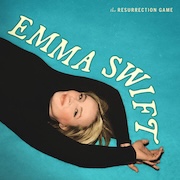
|
EMMA
SWIFT – THE RESURRECTION GAME
(LP,
CD,
Digital on Tiny
Ghost Records)
It’s
hard to believe this is singer-songwriter Emma
Swift’s first album of all original material,
arriving so fully formed and magnificent in
every way. The
Aussie musician, now residing in Nashville, did
release an acclaimed album of Bob Dylan covers,
Blonde on the Tracks, in 2020.
Between then and now she suffered a
seven-week nervous breakdown.
What followed was hospitalization in her
native Australia, and over a year of recovery
and therapy. And
like many great artists, in exorcising her
demons she turned her pain and suffering into an
incredible work of art.
The
album was recorded in the Isle of Wight and
Nashville. Producer
Jordan Lehning provides a sonic backdrop full of
rich, lush orchestrations and ace Nashville
musicians that perfectly complements Swift’s
tender, pure, beautiful voice and gorgeous
melodies. Occasionally,
those arrangements risk being cloying, but they
never cross that line, and the overall effect on
the listener is an extremely emotional
experience. We
all have baggage, and can easily identify with
Swift’s artful messages, tearful as they might
be for both her and us.
Swift
touches on many subjects in her journey through
the darkness and back out, and she has an
eloquent way with words.
The songs can all be read simply as
poetry, full of symbols and articulate meanings.
She sings of downward changes; of things
falling apart; a Catholic upbringing laden with
guilt and conscious of sin; despair; resilience;
heartbreak and loneliness.
Although she doesn’t specifically cite a
breakup in her own comments about the album,
perhaps because of personal reasons and it’s one
of those records where the listener can draw
their own interpretations, I hear breakup
imagery all over the place.
I call it a break-up and a breakdown
album.
The
album doesn’t waste a track.
All ten songs are excellent, and flow
together perfectly.
The Resurrection Game is meant to
be listened to in one sitting.
But it’s in repeated listenings where her
words sink in more and take on new meanings, her
vocal phrasings are better appreciated, and
where the album becomes really devastating.
A few songs wrecked me.
“Beautiful Ruins” combines a tale of
deterioration and aching heartbreak with a
melody, arrangement and vocal performance that
wrings every last tear out.
In “How to Be Small,” she sings “Let me
down easy/Let me down sweetly/Teach me not to
mind the fall/Show me everything and nothing at
all/Pin me to a crumbling wall/Teach me how to
be small.” She
tugs on every heartstring until you melt in a
puddle at her feet.
Closer “Signing Off With Love” could be
taken as ending the album with a ray of hope and
redemption, but it’s really quite the opposite;
a poetic tale of emptiness and tragedy.
The
Resurrection Game
took me by surprise; I wasn’t familiar with
Swift and knew nothing about the album before
listening, but was so grateful I did.
It’s a cathartic process and a free
therapy session to boot.
That it’s wrapped in such a complete
package – the melodies and arrangements,
poignant lyrics and her touching vocals make
this a highlight of the year.
(Mark
Feingold)
|
|
|
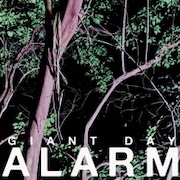
|
GIANT
DAY - ALARM
Available
on The
Elephant 6 Recording Co.
The
sophomore release from rural Pennsylvania
transplants Derek Almstead and Emily Growden is
darker than their 2024 debut Glass
Narcissus, right down to the album title,
black inner label and sleeve, and lyric sheet.
Reflective of the unsettling times we live in,
they still find a light of hope at the end of
dark, seemingly endless tunnels. ‘Out Of Hand’
opens with a slashing guitar that melds jangly
power pop to The Cure’s minimalist gothic
architecture (The Ladybug Transistor’s Gary
Olson adds subtle trumpet sparks to up the
anxiety quotient), which continues on last
month’s showgazey single ‘Golden Times,’ all
dreamy, swirling shades of Slowdive, Cocteau
Twins, and My Bloody Valentine draped in
sparkling keyboard flourishes.
The album is fittingly dedicated to
fellow Elephant 6 performer Will Cullen Hart
(Olivia Tremor Control, Sunshine Fix, et.al.)
who passed away last year around the time the
album was recorded. ‘Happy Families Virginia’
explores things that might have been: “What kind
of faces are looking out from the past?” But
perhaps we can pick up where we left off: “I’m
back into myself/We’re on the same plane now/The
places we could go.” It’s never too late to
start all over again. ‘Paoli’ is a 30-second
snippet of spooky soundtrack music played by
keyboardist Jamey Robinson that’s not too far
removed from the percussive explorations of
Louis “Moondog” Hardin.
The couple up the ante on the
percolating funky dance number ‘King Of Ghosts’
another earlier single with a
B-52’s-meet-Talking Heads quirky backbeat, and
Growden is at her heart-melting best with her
soothing whispered vocals on ’Back To The
Corner.’ Still room for a gnarly fuzz solo from
Armstead though!
The
enigmatic ‘Spite 28’ invites Dave “Diminisher”
McDonnell [from Terrastock vets Bablicon] to
supplement gurgling, krautrock-adjacent synths
while Growden coos invitingly, and ‘Think
Carefully’ suggests something went terribly
wrong, but I’m learning to deal with it: ”I’m
going to have time in my cell.”
A bit of Beefheartian syncopated funk
trips clumsily over a few empties as it stumbles
into the room to get down and dirty and do the
‘Dirty Dog.’ ‘New Hollow’ stalks ominously along
a bed of synths to warn all trespassers
“crashing through the woods” that “We don’t take
kindly to strangers” and ‘My Warm Smile’
continues the thread, picking up with ‘New
Hollow’’s closing lyric and floating skyward
amidst birdsong to the sun that “can never die”.
We end on an upbeat note with the
Stereolab-ish ‘Good Neighbor’, like most of the
album, a short (under three minutes), sweet
little musical aperitif that fades pleasingly
into the night.
(Jeff
Penczak)
|
|
|
|
|
|
|
|
|
|
|
|
|
|
|
|
|
|
 |
|

